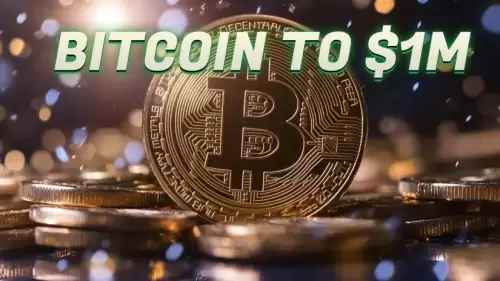 |
|
 |
|
 |
|
 |
|
 |
|
 |
|
 |
|
 |
|
 |
|
 |
|
 |
|
 |
|
 |
|
 |
|
 |
|
Cryptocurrency News Articles
Pi Network: Mainnet Migration Marred by Liquidity Challenges and Binance Listing Speculation
Jul 27, 2025 at 07:37 am
Pi Network navigates mainnet migration with over 13 million users, yet faces liquidity challenges and Binance listing rumors amidst community optimism.

Pi Network's journey through mainnet migration is marked by both progress and persistent challenges. With over 13 million users now part of the blockchain ecosystem, the project touts advancements in infrastructure and compliance. However, liquidity constraints and speculative trading dynamics continue to cast a shadow.
Mainnet Migration: A Double-Edged Sword
The core team, led by Dr. Nicolas Kokkalis and Dr. Chengdiao Fan, emphasizes the development of tools like Pi App Studio and .pi Domains. These aim to foster a decentralized Web3 economy. Yet, the market remains skeptical, primarily due to limited exchange listings and the resulting liquidity issues.
Liquidity Crunch: The $0.44 Question
Currently, PI tokens trade around $0.44, a 100% increase since the mainnet activation in February 2025. Despite this, a $3.4 billion market cap suggests cautious investor sentiment. The absence of listings on major exchanges, even with reported interest from Binance and OKX, restricts broader adoption. The circulating supply risks devaluing the asset.
Token Unlock and Market Volatility
A significant concern is the planned unlock of 620 million Pi tokens by December 2025. Historical data shows that such unlocks often lead to short-term price dips. The July 2025 unlock of 268.4 million tokens already caused fluctuations, making it harder to stabilize market confidence. Without supply controls, the increased circulating supply may devalue the asset.
Binance Listing Rumors and Community Optimism
The Pi Network community is buzzing with renewed optimism, fueled by rumors of a potential listing on Binance. Some users have reported seeing Binance-related support options in the Pi wallet, sparking speculation about a partnership or listing on the exchange. However, there's no official confirmation from either Binance or the Pi Network core team.
Whale Activity and Market Sentiment
Another trigger factor for Pi Network's cryptocurrency was the surge in large withdrawals from exchanges. Millions of Pi coins were moved to private wallets, reflecting investors' confidence in the long-term value of the asset. This positive signal comes after a massive sell-off by Pi whales, indicating a potential shift in market sentiment.
The Road Ahead: Challenges and Opportunities
The project's roadmap includes a “Pi Bank” for fiat integration, but details are scarce. Recent KYC updates aim to streamline user verification. Critics argue that delays in open mainnet functionality and real-world use cases hinder long-term viability. The absence of a clear governance framework raises questions about future token distribution and ecosystem management.
Despite the challenges, the Pi Network community remains engaged, praising tools like Pi App Studio. The project's mobile-first approach is attracting everyday users, but the reliance on speculative narratives warrants scrutiny. Greater transparency and concrete use cases are needed to validate PI’s utility.
So, while Pi Network continues to build its ecosystem, it's clear that navigating liquidity challenges and managing market expectations will be crucial. Whether or not Binance enters the picture, the community's resilience and the project's innovative spirit might just be the secret sauce for long-term success. Only time will tell if Pi can truly become the "people's currency." Stay tuned, Pioneers!
Disclaimer:info@kdj.com
The information provided is not trading advice. kdj.com does not assume any responsibility for any investments made based on the information provided in this article. Cryptocurrencies are highly volatile and it is highly recommended that you invest with caution after thorough research!
If you believe that the content used on this website infringes your copyright, please contact us immediately (info@kdj.com) and we will delete it promptly.
-

-

- Arctic Pablo Coin: Your Icy Treasure Hunt for Mega Returns and Investment?
- Jul 27, 2025 at 01:15 pm
- Dive into the world of Arctic Pablo Coin ($APC), the meme coin shaking up the crypto market with its unique blend of adventure, staking rewards, and deflationary mechanics. Is it the investment you've been waiting for?
-

-

-

-

-

-

-































































